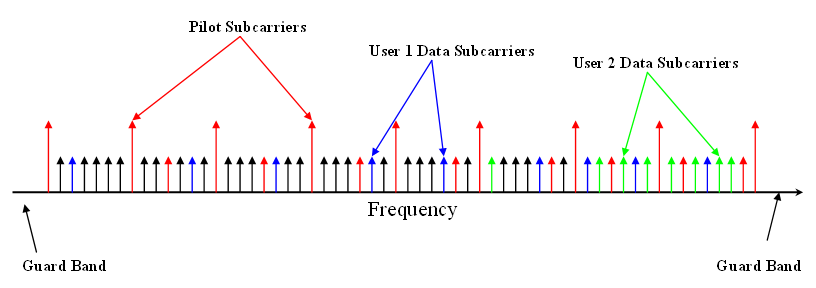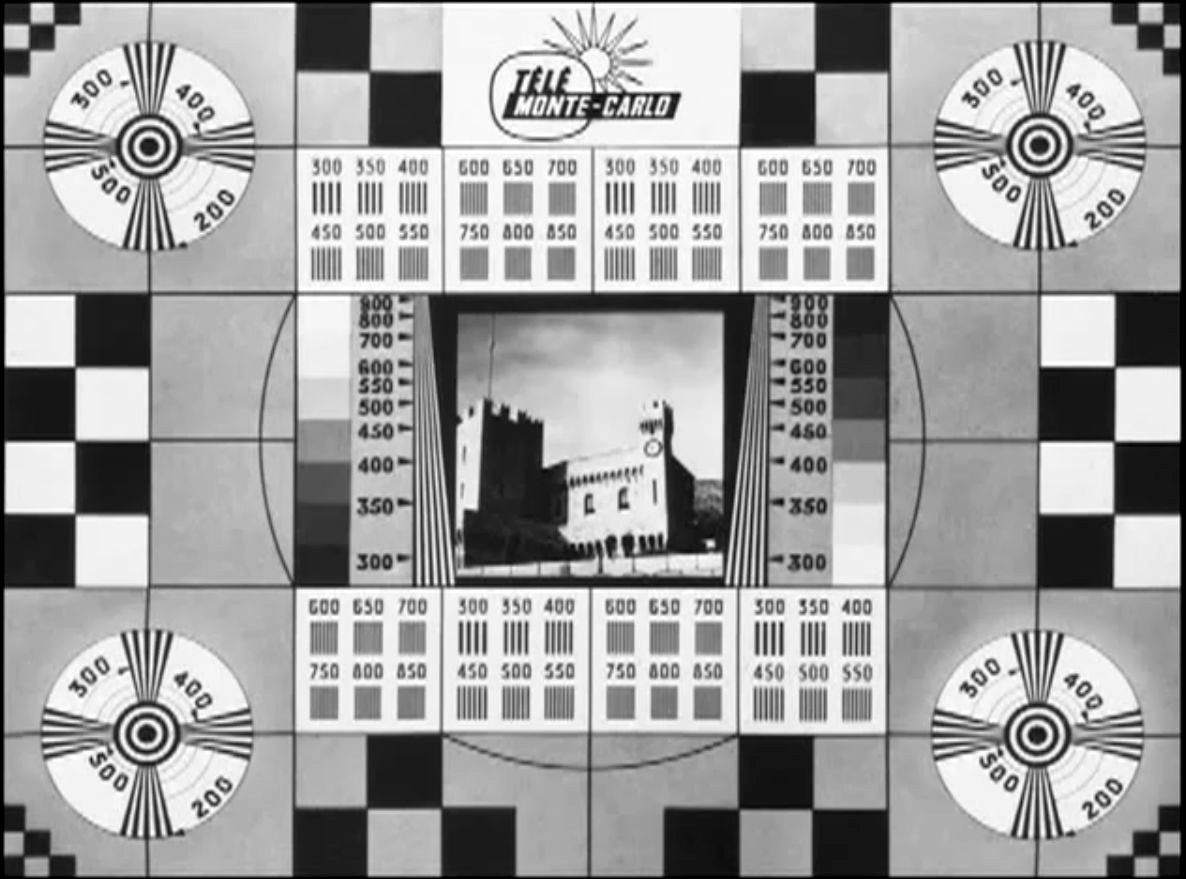|
CCIR System E
CCIR System E is an analog broadcast television system used in France and Monaco, associated with monochrome 819-line high resolution broadcasts. Transmissions started in 1949 and ended in 1985. System E specifications Some of the important specs are listed below:Reference Data for Radio Engineers, ITT Howard W.Sams Co., New York, 1977, section 30 * Frame rate: 25 Hz * Interlace: 2/1 * Field rate: 50 Hz * Lines/frame: 819 * Line rate: 20.475 kHz * Visual bandwidth: 10 MHz * Vision modulation: Positive * Preemphasis: none * Sound modulation: AM * Sound offset: +11.15 MHz on odd numbered channels, -11.15 MHz on even numbered channels * Channel bandwidth: 14 MHz System E implementation provided very good (near HDTV) picture quality but with an uneconomical use of bandwidth. With the usual additions of sound carrier and vestigial sideband the result was a combined signal that demanded approximately two to three times the bandwidth of more ... [...More Info...] [...Related Items...] OR: [Wikipedia] [Google] [Baidu] |
ITU-R
The ITU Radiocommunication Sector (ITU-R) is one of the three sectors (divisions or units) of the International Telecommunication Union (ITU) and is responsible for radio communications. Its role is to manage the international radio-frequency spectrum and satellite orbit resources and to develop standards for radiocommunication systems with the objective of ensuring the effective use of the spectrum. ITU is required, according to its constitution, to allocate spectrum and register frequency allocation, orbital positions and other parameters of satellites, "in order to avoid harmful interference between radio stations of different countries". The international spectrum management system is therefore based on regulatory procedures for frequency coordination, notification and registration. ITU-R has a permanent secretariat, the Radiocommunication Bureau, based at the ITU HQ in Geneva, Switzerland. The elected Director of the Bureau is Mario Maniewicz; he was first elected ... [...More Info...] [...Related Items...] OR: [Wikipedia] [Google] [Baidu] |
Subcarrier
A subcarrier is a sideband of a radio frequency carrier wave, which is modulated to send additional information. Examples include the provision of colour in a black and white television system or the provision of stereo in a monophonic radio broadcast. There is no physical difference between a carrier and a subcarrier; the "sub" implies that it has been derived from a carrier, which has been amplitude modulated by a steady signal and has a constant frequency relation to it. FM stereo Stereo broadcasting is made possible by using a subcarrier on FM radio stations, which takes the left channel and "subtracts" the right channel from it — essentially by hooking up the right-channel wires backward (reversing polarity) and then joining left and reversed-right. The result is modulated with suppressed carrier AM, more correctly called sum and difference modulation or SDM, at 38 kHz in the FM signal, which is joined at 2% modulation with the mono left+right audio (which ... [...More Info...] [...Related Items...] OR: [Wikipedia] [Google] [Baidu] |
Transposer
In broadcasting, a transposer or translator is a device in or beyond the service area of a radio or television station transmitter that rebroadcasts signals to receivers which can’t properly receive the signals of the transmitter because of a physical obstruction (like a hill). A translator receives the signals of the transmitter and rebroadcasts the signals to the area of poor reception. Sometimes the translator is also called a ''relay transmitter'', ''rebroadcast transmitter'' or ''transposer.'' Since translators are used to cover a small shadowed area, their output powers are usually lower than that of the radio or television station transmitters feeding them. Physical obstruction Reception of RF signals is sensitive to the size of obstruction in the path between the transmitter and the receiver. Generally speaking, if the size exceeds the wavelength the reception is interrupted. Since the wavelength is inversely proportional to frequency, it follows than that the higher ... [...More Info...] [...Related Items...] OR: [Wikipedia] [Google] [Baidu] |
Television Transmitter
A television transmitter is a transmitter that is used for terrestrial television, terrestrial (over-the-air) television broadcasting. It is an electronic device that radiates radio waves that carry a video signal representing moving images, along with a synchronized audio signal, audio channel, which is received by television receivers ('televisions' or 'TVs') belonging to a public audience, which display the image on a screen. A television transmitter, together with the Television studio, broadcast studio which originates the content, is called a television station. Television transmitters must be licensed by governments, and are restricted to a certain frequency channel and power level. They transmit on frequency television channel frequencies, channels in the very high frequency, VHF and ultrahigh frequency, UHF bands. Since radio waves of these frequencies travel by line-of-sight propagation, line of sight, they are limited by the horizon to reception distances of 40–60 ... [...More Info...] [...Related Items...] OR: [Wikipedia] [Google] [Baidu] |
Broadcast Television Systems
Broadcast television systems (or terrestrial television systems outside the US and Canada) are the encoding or formatting systems for the transmission and reception of terrestrial television signals. Analog television systems were standardized by the International Telecommunication Union (ITU) in 1961, with each system designated by a letter ( A- N) in combination with the color standard used (NTSC, PAL or SECAM) - for example PAL-B, NTSC-M, etc.). These analog systems for TV broadcasting dominated until the 2000s. With the introduction of digital terrestrial television (DTT), they were replaced by four main systems in use around the world: ATSC, DVB, ISDB and DTMB. Analog television systems Every analog television system bar one began as a black-and-white system. Each country, faced with local political, technical, and economic issues, adopted a color television standard which was grafted onto an existing monochrome system such as CCIR System M, using gaps in the v ... [...More Info...] [...Related Items...] OR: [Wikipedia] [Google] [Baidu] |
CCIR System F
CCIR System F was an adaptation of System E used in Belgium (1953, '' RTB'') and Luxembourg (1955, '' Télé Luxembourg''). With only half the vision bandwidth and approximately half the sound carrier offset, it allowed French 819-line programming to squeeze into the 7 MHz VHF broadcast channels used in those neighboring countries, albeit with a substantial loss of horizontal resolution. Use of System F was discontinued in Belgium in February 1968, and in Luxembourg in September 1971. Between 1976 and 1981 when French channel TF1 was switching area by area to the new analog 625-lines UHF network with SECAM colour, some transmitters and gapfillers broadcast the 819-line signal in UHF.TDF:situation des émetteurs au 31 December 1980 When switching to 625-lines, most gapfillers did not change UHF channel (e.g. many gapfillers using this transmission located in French Alps near Grenoble, Mont Salève and Geneva began broadcasting on UHF channel 42, and continue to use thi ... [...More Info...] [...Related Items...] OR: [Wikipedia] [Google] [Baidu] |
TMC (TV Channel)
TMC (; originally short for Télé Monte-Carlo) is a Franco– Monégasque entertainment television channel, owned by French media holding company Groupe TF1. History The genesis In 1939, Charles Michelson obtained concession to operate Radio Tangier. The project was, taken over by French authorities after World War II to create Radio Impériale. On February 6, 1948, Michelson obtained a compensational five-year management contract for shortwave radio at Radio Monte-Carlo. The management is majority owned by Sofirad and through it, by the French State. The failure of technical experiments with this mode of retransmission led François Mitterrand, then Minister of Information, to make a concession to Michelson. On October 22, 1949, he benefited from a “sub-concession option” for television in the Principality of Monaco, from the company owning Radio Monte-Carlo. The opportunity is significant as on October 12, 1949, Sofirad president Jacques Meyer announced the French go ... [...More Info...] [...Related Items...] OR: [Wikipedia] [Google] [Baidu] |
Eiffel Tower
The Eiffel Tower ( ; ) is a wrought-iron lattice tower on the Champ de Mars in Paris, France. It is named after the engineer Gustave Eiffel, whose company designed and built the tower from 1887 to 1889. Locally nicknamed "''La dame de fer''" (French for "Iron Lady"), it was constructed as the centrepiece of the Exposition Universelle (1889), 1889 World's Fair, and to crown the centennial anniversary of the French Revolution. Although initially criticised by some of France's leading artists and intellectuals for its design, it has since become a global cultural icon of France and one of the most recognisable structures in the world. The tower received 5,889,000 visitors in 2022. The Eiffel Tower is the most visited monument with an entrance fee in the world: 6.91 million people ascended it in 2015. It was designated a in 1964, and was named part of a UNESCO World Heritage Site ("Paris, Banks of the Seine") in 1991. The tower is tall, about the same height as an 81- ... [...More Info...] [...Related Items...] OR: [Wikipedia] [Google] [Baidu] |
Paris
Paris () is the Capital city, capital and List of communes in France with over 20,000 inhabitants, largest city of France. With an estimated population of 2,048,472 residents in January 2025 in an area of more than , Paris is the List of cities in the European Union by population within city limits, fourth-most populous city in the European Union and the List of cities proper by population density, 30th most densely populated city in the world in 2022. Since the 17th century, Paris has been one of the world's major centres of finance, diplomacy, commerce, culture, Fashion capital, fashion, and gastronomy. Because of its leading role in the French art, arts and Science and technology in France, sciences and its early adoption of extensive street lighting, Paris became known as the City of Light in the 19th century. The City of Paris is the centre of the Île-de-France region, or Paris Region, with an official estimated population of 12,271,794 inhabitants in January 2023, or ... [...More Info...] [...Related Items...] OR: [Wikipedia] [Google] [Baidu] |
Metropolitan France
Metropolitan France ( or ), also known as European France (), is the area of France which is geographically in Europe and chiefly comprises #Hexagon, the mainland, popularly known as "the Hexagon" ( or ), and Corsica. This collective name for the European regions of France is used in everyday life in France but has no administrative meaning, with the exception that only Metropolitan France is part of the Schengen Area. Indeed, the overseas departments and regions of France, overseas regions have exactly the same administrative divisions of France, administrative status as the metropolitan regions. Metropolitan France comprises mainland France and Corsica, as well as nearby List_of_islands_of_France#Islands_of_metropolitan_France, French islands in the Atlantic Ocean, the English Channel and the Mediterranean Sea waters. Its borders have undergone significant territorial evolution of France, changes over the centuries, particularly in the east, but have remained unaltered since 1947 ... [...More Info...] [...Related Items...] OR: [Wikipedia] [Google] [Baidu] |
SECAM
SECAM, also written SÉCAM (, ''Séquentiel de couleur à mémoire'', French for ''sequential colour memory''), is an analog color television system that was used in France, Russia and some other countries or territories of Europe and Africa. It was one of three major analog color television standards, the others being PAL and NTSC. Like PAL, a SECAM picture is also made up of 625 interlaced lines and is displayed at a rate of 25 frames per second (except SECAM-M). However, due to the way SECAM processes color information, it is not compatible with the PAL video format standard. SECAM video is composite video; the luminance (luma, monochrome image) and chrominance (chroma, color applied to the monochrome image) are transmitted together as one signal. All the countries using SECAM have either converted to DVB, Digital Video Broadcasting (DVB), the new pan-European standard for digital television, or are currently in the Digital television transition, process of conversion. S ... [...More Info...] [...Related Items...] OR: [Wikipedia] [Google] [Baidu] |







